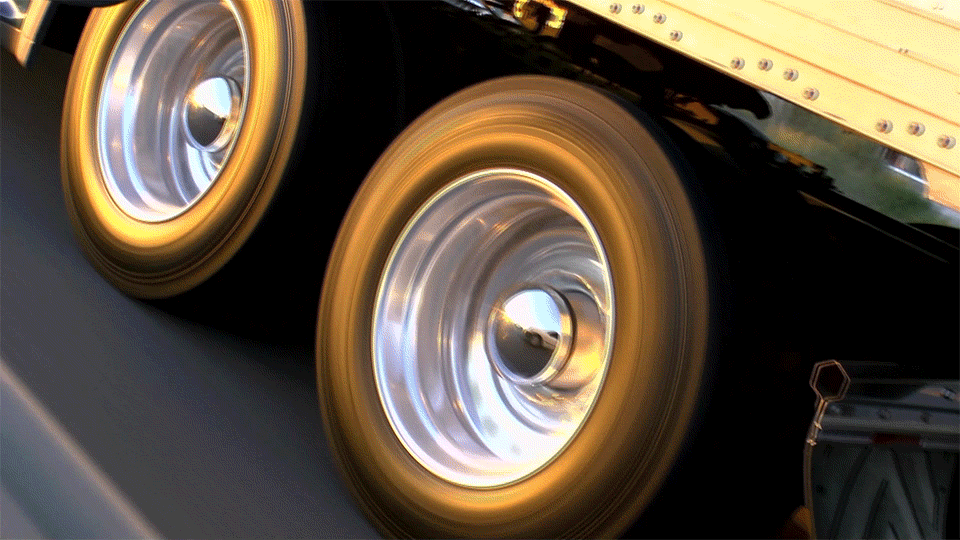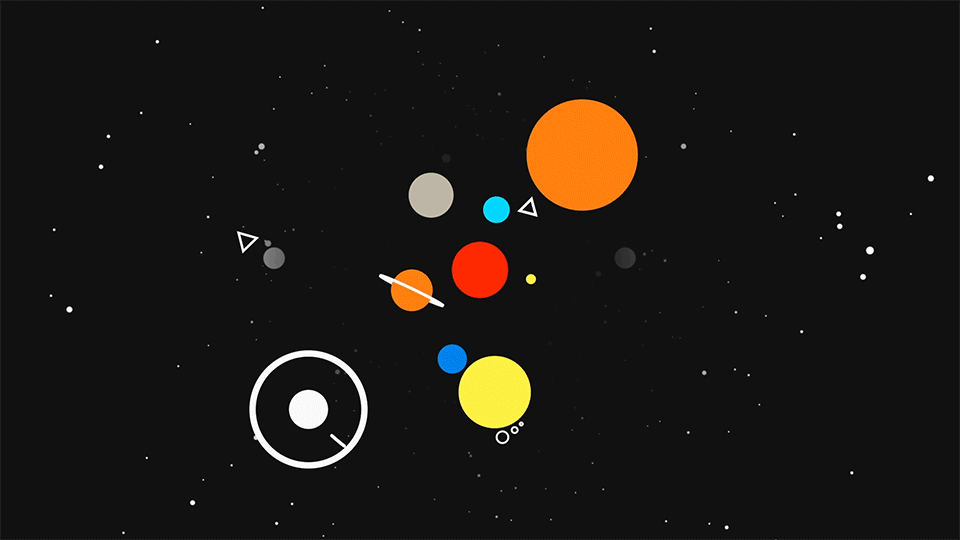If you’ve priced a video or animation lately, you know the market is crowded.
But not all “video partners” are built the same.
Bottle Rocket Media (BRM), located in Chicago’s West Loop neighborhood, is a full-service, award-winning video production and motion design studio that thinks like a performance team.
Our site says it plainly: we’re built to make “stunning videos fun and easy” for clients, and we go one step ahead by planning videos for search, making them AI visible, and optimizing them to perform across channels.
If you’re a marketer, CEO, or founder in need of a partner who thinks beyond the brief, you’ve found the right team.
We partner with clients across healthcare, technology, nonprofits, and Fortune 500 companies, delivering end-to-end production, including strategy, scripting, live action, motion design, and distribution.
We listen, assess your goals, define success together, and deliver work that moves people and metrics.
Below are eight reasons why Bottle Rocket Media is truly different from standard video production companies or SEO /GEO agencies, and exactly what that means for you.
1. Story-First Creative You Can Actually Feel
Plenty of agencies have pretty visuals, but at Bottle Rocket Media, we start with narrative clarity. Before the cameras roll, we zero in on the story because the story is what separates a fleeting impression from content that sticks. That means understanding:
- Who you’re talking to – the specific audience you need to reach and resonate with.
- What you want them to feel – the emotion that drives connection and motivates action.
- What they’ll remember 10 minutes later – the lasting impression that lingers once the screen goes dark.
Our reel and portfolio bring this approach to life. Every project anchors on the story instead of leaning on tired stock tropes. The result is content that moves, persuades, and endures.
Why This Matters
Story is the multiplier. It boosts completion rates, strengthens recall, and increases shareability long before you spend a single dollar on media placement.
If you’re a marketer, involve us early to pressure-test your video’s emotional hook before scripts lock. If you’re a founder, let us distill your origin story into a 60–90 second narrative that can scale across your website, email campaigns, and sales decks. If you’re seeking internal buy-in, share our reel with your team to quickly align stakeholders around tone, feel, and vision.
Because at Bottle Rocket Media, we craft stories that travel further, stick longer, and make your investment worth it.
2. Motion Graphics That Clarify
BRM’s motion design is purpose-built. Every frame is designed to make the complex feel simple and actionable. That means simplifying technical products, visualizing dense data, and speeding up understanding when your audience has only seconds to pay attention.
At the core of this approach, we:
- Simplify complex products – for Sarepta Therapeutics, BRM used motion graphics to explain the highly complex subject of gene therapy in a way that patients, caregivers, and investors could quickly grasp.
- Visualize data – for companies preparing for IPO, BRM has transformed financial data and projections into motion-driven stories, keeping investors tuned in and helping retention rates soar.
- Speed understanding – across industries from healthcare to fintech, BRM’s animations help audiences absorb in 30 seconds what would take pages of text to explain.
Our motion graphics service page and blog keep returning to this core truth: animation should translate complexity into meaning. Even visual processing research is cited to explain why motion is such a powerful tool for brand education and retention.
Why This Matters
When the stakes are high, such as when you’re launching a new category, explaining a technical product, or presenting in compliance-heavy industries, clarity is the edge that wins.
At Bottle Rocket Media, motion graphics are used as fuel for clarity, retention, and connection.
3. Full-Service Production = Fewer Handoffs and Faster Timelines
BRM handles everything in-house. Case in point: with our Cormentum engagement, we produced two dozen masterclass workshops covering casting, wardrobe, locations, shooting, directing, editing, motion graphics, and audio. That’s end-to-end, at scale.
And when the Illinois Retail Merchants Association’s (IRMA) We Are Retail campaign had a grant deadline requiring 25 blogs approved and published, plus 25 matching videos on their website, all within 48 hours, BRM’s close client relationships, internal team dynamic, and full-service capabilities made it possible. The campaign was delivered on time, in full, and with quality intact.
Why This Matters
One accountable team means fewer delays, fewer surprises, and a consistent look and feel across deliverables. When clients hand us the reins, we manage everything so there are no worries for the client.
Deadlines don’t wait, and neither do we. We’ve delivered masterclasses, national campaigns, and 25 blogs and videos in two days with speed and without cutting corners. That’s why Bottle Rocket Media works; we’re one integrated, accountable team.
4. Platform-Smart Distribution
Many studios “deliver the master file” and call it a day. Bottle Rocket Media builds for performance. Every project is designed for the platforms where your audience watches, from email, website, YouTube, TikTok, Instagram Reels, LinkedIn, OTT, trade show screens, and more. That means aspect ratios, platform-specific hooks, metadata, thumbnails, and even multilingual SEO that boosts discoverability and stickiness.
With IRMA’s We Are Retail campaign, BRM transformed 100+ retailer video stories into a full omnichannel ecosystem. Every story became a long-form feature, a blog post optimized for search, and multiple social cutdowns designed for YouTube, TikTok, Meta, Snapchat, Reddit, X and LinkedIn. The result: +9.3M total video views and an 886% increase in brand impressions in just a few months.
For Basis Technologies, BRM delivered a “Golden Age of Advertising” hero commercial plus more. We created cutdowns, still assets, and digital out-of-home adaptations for Advertising Week NYC. That multi-format toolkit meant one creative concept extended across paid ads, trade show activations, and editorial coverage, earning Basis Technologies a Webby nomination.
Why This Matters
The same story cut three ways for feed, search, and long-form performs better than one “catch-all” edit. BRM’s ability to anticipate platform dynamics means your message isn’t just seen, it’s remembered. And when deadlines hit, our integrated, in-house team delivers without compromise.
If you’re a growth marketer, Bottle Rocket Media helps you stretch every dollar of your production budget with a full distribution kit. We’ll turn a 16:9 hero cut into 1:1 feeds and 9:16 Shorts/Reels/TikToks. We’ll use platform-optimized thumbnails and include keyword-rich titles and descriptions to maximize ROI from a single shoot day.
At Bottle Rocket Media, we make sure your videos and stories travel seamlessly, natively, and powerfully across every screen that matters.
5. SEO-Smart (and AI-Aware) Video
Plenty of studios promise video production, but we position ourselves as something most skip: a video SEO partner. At BRM, we emphasize optimizing titles, descriptions, metadata, and structure so your video gets discovered. We bridge the gap between art and algorithm, so your content is built for both traditional search and AI-assisted environments.
How has this strategy impacted our clients? We’ve been able to achieve the following results:
- 423% increase in organic website traffic for retail campaigns.
- 251% more clicks and 392% more impressions for a coffee e-commerce brand.
- Top 10 keyword rankings for pharmaceutical and veterinary clients (including terms like prescription acne cream at #4 and veterinary consolidator at #3).
Our content strategies have proven so effective that Gemini now surfaces our clients’ blog previews directly in AI-generated results, demonstrating how strong SEO foundations and optimized content extend visibility from Google search into AI ecosystems.
Why This Matters
As search shifts from ten blue links to direct answers and AI-generated responses, the structure of your video content is everything. Schema, transcripts, and smart metadata increase the odds your brand shows up, and shows up well, wherever people are searching.
Video without SEO is art on mute.
We understand this. That’s why Bottle Rocket Media makes sure your story looks good and is seen through search, social, and AI.
6. Event & Experience Video That Extends the Moment
Beyond stage capture, Bottle Rocket Media builds fully integrated event ecosystems from promotional booth explainers and hype sizzles to product loops and livestreams.
This means your event content doesn’t just live in the moment; it performs before, during, and long after. Our video systems work across trade shows, live or virtual events, and in-booth explainers, so that your brand story reaches every stage of the customer journey.
Why This Matters
Event budgets are substantial, and those investments should last. With BRM’s approach, your videos become durable assets that enable lead engagement post-show and amplify ROI.
By combining creative storytelling with technical SEO strategy, BRM transforms event videos into ongoing lead-generating assets, boosting visibility, engagement, and measurable impact across both digital and in-person experiences.
7. Credibility You Can Point To
Bottle Rocket Media brings the receipts. As a multi-year Inc. 5000 honoree and one of the Financial Times’ 500 Most Successful Companies in America, BRM has the recognition to back up its growth. We hold a 5.0 average rating on Clutch, with gold-verified status among roughly 15,000 video production firms, and are listed by The Manifest as one of the most-reviewed video production agencies in Chicago.
Our awards shelf is just as impressive. Currently, we’ve earned 24 Telly Awards, 21 Vega Awards, a Daytime Emmy, and an AVA Award. That’s consistent creative excellence at its best.
Here’s what one of our clients had to say:
“Bottle Rocket brought a wealth of experience and best practices to every idea we presented. … Working with Bottle Rocket was seamless, as their exceptional time management and extensive wealth of experience exceeded expectations.”
– Graphic Design & Video Manager, Healthcare Company (Clutch review, Dec 2, 2024)
Why This Matters
When you need approvals and internal buy-in, third-party validation minimizes perceived risk and accelerates decisions. Recognition from trusted sources and tangible examples of satisfied clients go a long way.
At the end of the day, credibility is proof of performance. Bottle Rocket Media’s track record of industry recognition, award-winning creativity, and verified client satisfaction demonstrates a partner you can confidently bring to the table.
If you’re making the case to your leadership team, justifying spend to procurement, or just want to ensure that your brand is in safe and in-proven hands, BRM delivers the validation with results that move decisions forward and set campaigns up for long-term success.
8. People You’ll Actually Like Working With
Check the Team page. Bottle Rocket Media is powered by producers, directors, editors, designers, post pros, and a marketing team that amplifies every story they create. With decades of broadcast and brand experience spanning The Oprah Winfrey Show, major network credits, design leadership, and news producing, we are people you’ll love to work with.
Our crew pairs technical expertise with audience-first marketing strategies. And at the core of it all is kindness: a value that guides collaboration, keeps egos out of the room, and makes every partnership feel seamless and enjoyable.
Why This Matters
Creative outcomes improve when collaboration feels effortless and feedback flows. With BRM, you get a quality video production team with marketers who understand distribution, optimization, and ROI. You’ll get work that resonates, ranks, and reaches beyond the edit room.
When you partner with Bottle Rocket Media, you’re gaining a team that blends creative excellence, marketing savvy, and a people-first approach. Our proven ability to deliver high-quality content, supported by a culture of kindness and collaboration, makes every project feel smooth while driving measurable impact.
Why Bottle Rocket Media?
Creative that moves people. Strategy that moves metrics. That’s the Bottle Rocket Media difference. If you want work that looks premium and performs in feeds, search, and AI-driven answers, you need a partner who can thread story, craft, and distribution from day one. BRM does exactly that. We are backed by awards, reviews, and a team you’ll enjoy collaborating with.
As a startup looking for your first brand video or an established company ready to scale your video marketing content strategy, the right agency can help you get there faster, wiser, and with a lot less stress. If you’re ready to elevate your brand with professional video production services or motion graphics production, let’s talk.









